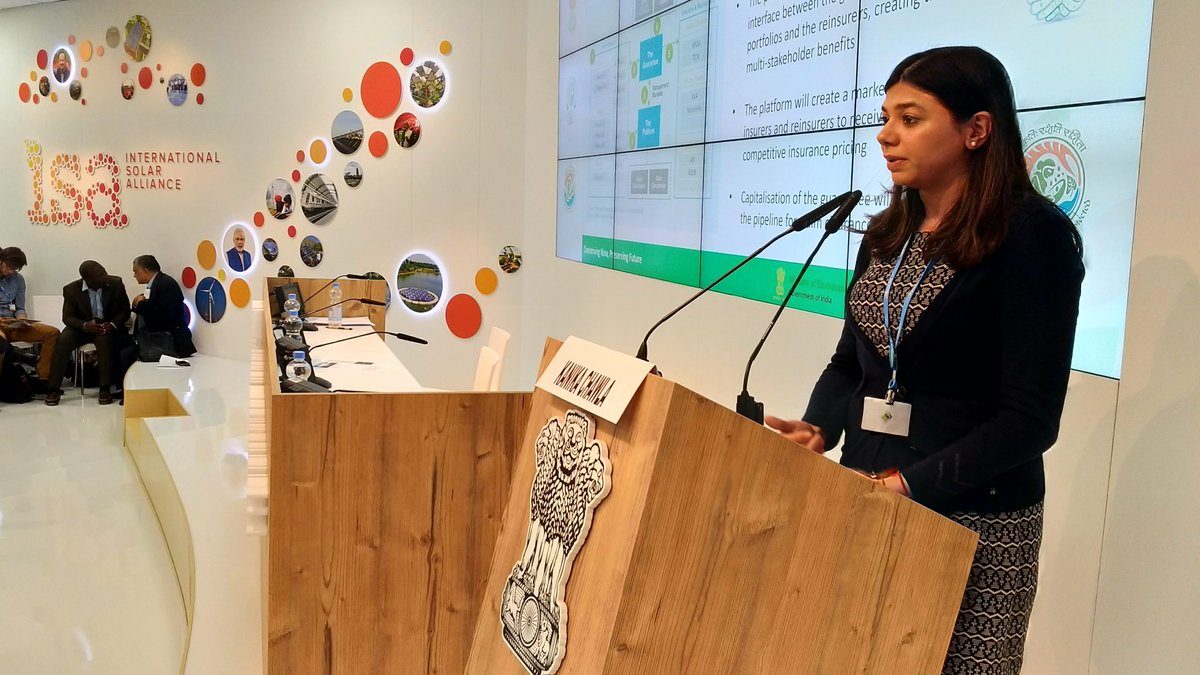A $1 billion guarantee could attract up to $15 billion of investments for 20 gigawatts (GW) of solar PV capacity in more than 20 countries, claims a study released on November 13, 2017, at the India Pavilion at the COP23 climate negotiations in Bonn, Germany.
The Common Risk Mitigation Mechanism (CRMM) is a multilateral market platform, which received initial support from 17 countries with high solar potential, including India, France, Australia, Mali, Namibia, and Nigeria, among others. The CRMM Feasibility Study outlines the 20 GW plan as a pilot phase with its eventual aim to leverage billions of dollars of impact capital to catalyze $1 trillion of domestic and international private institutional capital, and transform global renewable energy markets. If successful, CRMM could help build over 1,000 GW of solar power generation capacity in low and middle-income countries by 2030.
The CRMM pilot phase will be launched in 2018. The pilot aims to achieve a critical size and demonstrate its cost-effectiveness in pooling and aggregating capital and mitigating risks at an international level.
A multi-stakeholder taskforce comprising the Council on Energy, Environment, and Water (CEEW), the Confederation of Indian Industry (CII), the Currency Exchange Fund (TCX), and the Terrawatt Initiative (TWI) designed the feasibility study on the request of 17 signatory countries of the International Solar Alliance (ISA). The study also presents recommendations to governments of low and middle-income countries to accelerate their solar energy generation capacity, at scale and in local currency. The idea is to develop a sustainable financial ecosystem, centered around an international guarantee mechanism, which could pool various types of risks and pool projects across many countries to lower the costs of hedging against those threats.
Financing of solar power generation assets in most developing countries suffers from a lack of risk mitigation tools, a high perception of risk among investors, high transaction costs, small project sizes, and lack of scale. Investors, developers, and other stakeholders need transparency and clarity of process, which is often missing in some countries.
CRMM is designed to create a global solar market, boosting confidence among the international development community and private and public institutional financiers, to help meet global climate targets in countries with high solar potential.
Arunabha Ghosh, CEO of CEEW, said: “As much as 75% of the cost of solar power is the cost of finance. CRMM is designed to pool multiple risks – political, off-taker, and foreign exchange risks – and have many participating countries, capitalized through multiple sources of public money. The pooling of risks would reduce double counting of risk variables, providing a single guarantee cover at prices lower than the additive price of existing insurance products. A multi-country effort of this nature gives me hope that a clean energy transition is possible and actionable.”
Upendra Tripathy, Interim Director General, ISA, added: “CRMM – the Paris Guarantee Fund – is a major step in the implementation of the ISA and its program aimed at mobilizing affordable finance at scale. This instrument will dramatically lower the cost of finance for renewable energy and the overall price of electricity – and will set an example worth emulating by all.”
“Concerted actions undertaken in the context of the Alliance should focus on realizing the objectives enshrined in the Paris Declaration, which included: bringing our efforts together to reduce the cost of finance for solar energy and mobilize up to $1000 billion investments by 2030, and developing new, cost-efficient and reliable solar technologies and applications,” said Ségolène Royal, Ambassador for the Arctic & Antarctica Poles and Special Envoy for the implementation of the ISA, Government of France.
ISA, jointly launched by India and France at COP21 in 2015, is set to become a treaty-based intergovernmental international organization on 6 December. ISA aims at creating a global buyers’ market for solar energy through a platform that brings together countries with rich solar potential to aggregate demand for solar across member countries. In this manner, ISA aims to reduce prices, facilitate the deployment of existing solar technologies at scale, and to promote collaborative solar R&D and capacity. The Feasibility Study, aligned with the framework of the ISA, addresses its mandate explicitly to aggregate and harmonize frameworks for investment.
This content is protected by copyright and may not be reused. If you want to cooperate with us and would like to reuse some of our content, please contact: editors@pv-magazine.com.








By submitting this form you agree to pv magazine using your data for the purposes of publishing your comment.
Your personal data will only be disclosed or otherwise transmitted to third parties for the purposes of spam filtering or if this is necessary for technical maintenance of the website. Any other transfer to third parties will not take place unless this is justified on the basis of applicable data protection regulations or if pv magazine is legally obliged to do so.
You may revoke this consent at any time with effect for the future, in which case your personal data will be deleted immediately. Otherwise, your data will be deleted if pv magazine has processed your request or the purpose of data storage is fulfilled.
Further information on data privacy can be found in our Data Protection Policy.